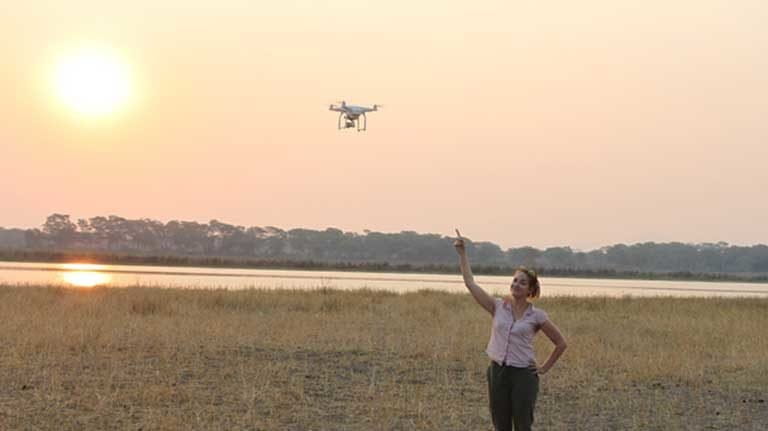- Rachel Nuwer, who has written for Mongabay, Smithsonian, the New York Times and other publications, published a new book in September, “Poached,” which delves deeply into the global wildlife trafficking epidemic.
- Her book looks into the origins of the wildlife trade, its mechanisms, markets, and solutions. It covers charismatic mammals (elephants, rhinos and tigers), as well as the non-charismatic (pangolins and snakes).
- In this exclusive Mongabay Q&A, the author shares some of her most harrowing moments on the trail of global wildlife traffickers. The scariest thing of all: how accepting people can often be to the slaughter of millions of wild animals, and to the extermination of species, so as to be served a rare meat or a bogus cure.
- Still, Nuwer finds hope in the courageous individuals who fight the trade.

Journalist Rachel Nuwer was sitting in a Vietnamese restaurant in Ho Chi Minh City when the table next to her ordered a snake – a live, five-foot-long black cobra with its mouth bound by green twine. Slowly, the servers used scissors to cut into the reptile’s body, snipping along its belly as it writhed in pain. The scene unfolding in front of her was like something out of the movie Indiana Jones and the Temple of Doom – only it was happening in the all-too-real world of wildlife trafficking that Nuwer expertly explores in her new book Poached.
Ivory trading, bear bile farming, pangolin and rhino poaching: Nuwer traveled to a dozen countries to shine a light on the dark origins and underworld pathways of the illegal wildlife trade that is decimating the world’s biodiversity today.
Her reporting takes readers from the killing fields of Africa, where hundreds of thousands of elephants, and tens of thousands of rhinos, have been slaughtered for their ivory and horns since the start of the 20th Century, and to the Asian marketplace, where she visits wild meat restaurants and Chinese medicine shops.
Poached reveals, sometimes in sickening detail, the remarkably wide extent of this worldwide epidemic that threatens the survival of countless species – charismatic and uncharismatic alike. Wildlife trafficking is now the fourth largest global illegal trade, ranking just after narcotics, counterfeiting of products and currency, and human trafficking. The industry is worth an estimated 19 billion dollars, and the crisis is growing worse.
But Nuwer’s reporting doesn’t entirely come out of this heart of darkness. She offers glimmers of hope, too. Vietnam has moved to end the cruel practice of bear bile farming. Rescued sun bears and Asiatic black bears will be sent to wildlife refuges in coming years. Nuwer also looks at preservation strategies: the dehorning of rhinos in the hopes of legally trading in their horns to fund conservation, and at initiatives to release trafficked pangolins back into the wild.
Mongabay recently spoke with Nuwer – who has written for Mongabay, Smithsonian, the BBC and other media outlets. Here she relates her experiences on the front lines of the wildlife trade, and her expectations for the future of the world’s most threatened species.
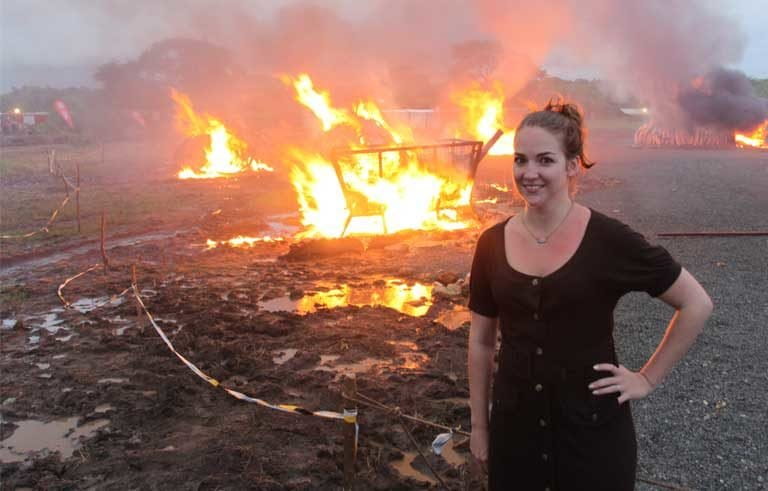
Mongabay: You’ve covered poaching and trafficking around the world for some very prestigious publications. How did you first get into covering the wildlife trade?
Rachel Nuwer: There was the childhood of beaches, and bayous and swamps in Mississippi. And then I wanted to be a scientist, like so many science journalists do. I went into a conservation ecology degree and I’d kind of heard about the wildlife trade – I was aware of the elephant poaching crisis from the 1980s, but I thought that was basically over. While I was doing my degree, this is like 2008 to 2010, poaching started ramping up again in Africa. I was seeing this every now and then on the news.
I was in Vietnam doing research for my master’s degree when the last Javan rhino in the country was killed for its horn. It just got me to thinking ‘What is going on?’ It felt like there was this big dark shape lurking before me and I wanted to discover it and see what this thing was that I kept hearing about. At the same time, I was having a crisis of faith about my career in science and thinking I was going to switch to journalism. I thought this [career move] would allow me to do a better job of bringing attention and help to the issues I care about.

Mongabay: What had caused that increase in elephant poaching?
Rachel Nuwer: It was pretty much more people, more access. But there was a legal one-off sale of ivory and a lot of experts think that stimulated demand because it signaled to the market that ivory was okay [to trade] again. There was a legal sale in 1999 to Japan of a bunch of ivory from Africa, and then Japan immediately started making a fuss of wanting more ivory. And then China was like, ‘This is bullshit. If Japan gets ivory, we need ivory.’ China had previously resigned itself to allowing its market to close.
So a lot of people say that Japan bears the biggest moral responsibility for the poaching crisis today by reigniting that market, by awakening China.
Mongabay: You tell the story of many different species in your book. What species gives you the most hope for the future?
Rachel Nuwer: I think elephants are going to be okay, in terms of wildlife trafficking. I think elephants are going to come under pressure because of human development – conflicts with people living around parks, because human populations are going up and land isn’t going up. That will be the big problem for elephants in the future, but less so ivory poaching.

Mongabay: On the flip side of that, what animal gives you the least hope?
Rachel Nuwer: I’m really concerned about tigers. There are 4,000 or fewer left in the wild. I think that number will just keep going down. We’ll have a few tigers here and there in strictly protected parks and that’s probably it. And then of course, in backyards in Texas and farms in China and Southeast Asia.
Mongabay: It seems a lot of people are aware of the poaching of tigers, rhinos, and elephants. While you were working on this book, what lesser known species did you especially want to shine a light on?
Rachel Nuwer: Pangolins! That’s my favorite. I just think pangolins are so freaking cool. I got to know them when I was doing my research as an ecologist. They’re just these shy, nocturnal, strange, adorable creatures that don’t hurt anyone or anything, except ants and termites, and they’re being killed by the millions, predominantly for their scales.
The scales are used in traditional Chinese medicine for all sorts of things, but the one [use] that always stands out in my mind is lactation. If you’re a woman and you’re not producing enough breast milk, you’re supposed to eat a bunch of pangolin scales [a solution that is unsupported by science].
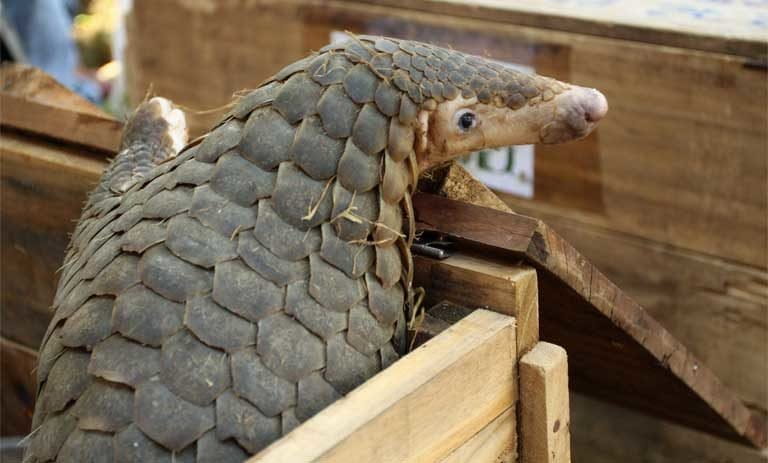
There are four species in Africa and four in Asia. The Asian ones have been hammered for a couple decades and that’s why traders have now turned to Africa, because there are not enough left in Asia.
But there is so little data about them. Nobody knows how many pangolins are left in the wild. The evidence we have is [mostly hearsay]. The people living near parks say they used to see them crossing the road, or in their backyard, and now they never see them. Hunters, like the one I interviewed, say pangolins have almost completely disappeared from [his] area. So there’s all this anecdotal evidence that they are going the way of extinction, but we can’t say for sure.
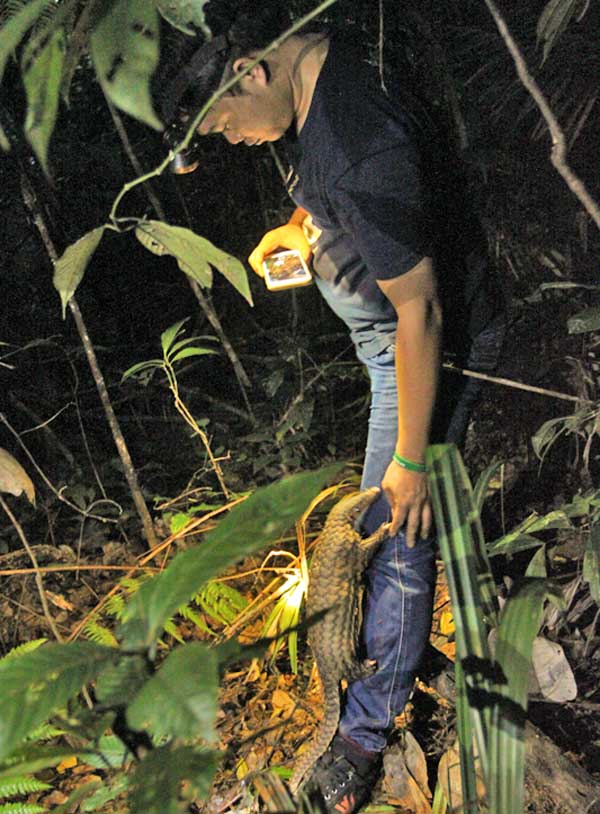
Mongabay: A lot of people think about climate change as this very complex issue to solve, but poaching and trafficking as being an easier one to halt. Why isn’t this actually the case?
Rachel Nuwer: The problem is, there isn’t one driver for wildlife trafficking. It’s a multi-tentacled beast. People in the U.S. or Japan who want exotic pets don’t care, or don’t want to know, if those pets are poached from the wild. There are grandmothers in Vietnam who think rhino horn is the best thing to cure their grandbaby’s flu. There are people in China who want ivory because they think it connects them to their ancient roots. I could go on and on. But for that reason, there’s no quick easy solution.
On top of all that, there’s incredible poverty throughout Southeast Asia and Africa. As long as there’s a buck or two to be made from pangolin scales or ivory, people are going to keep doing it because they have no other choice.

Mongabay: What’s the relationship between local individual poachers as compared to large militia-style trafficking operations?
Rachel Nuwer: There are definitely tons of [scenarios] where a larger trader will come to a village and start recruiting men, and they’re calling the shots and bankrolling them to try and poach a rhino or elephant.
It is individual guys on the ground, but they’re usually being controlled by someone bigger [and further] up the [trafficking] chain. That someone bigger might equip them with weapons, night vision technologies, things like that. These [poachers] are guys who can’t afford to feed their families, much less military-grade equipment.
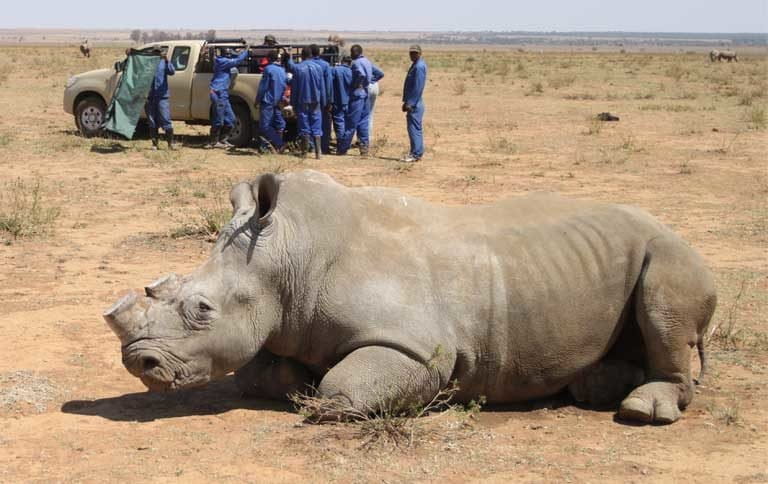
Mongabay: If China were to change its attitudes toward wildlife products, how much would that change the trade?
Rachel Nuwer: If China stopped using wildlife products that would be absolutely huge. That would be a hands-down victory for animals, and 80 percent of our job would be done. It’s not like I have something against China, that’s just where the demand is and where the biggest number of people are. Vietnam is also a large source of [wildlife trafficking] demand, but Vietnam is a fraction of China.
Mongabay: What was your strangest, most disturbing, or craziest experience while reporting this book?
Rachel Nuwer: The weirdest thing was this rhino horn guy with his Oreo cookie tin. I was going to a posh restaurant [to meet this guy] that an expat had recommended to me – it was a kind of hipster [venue], with Vietnamese and foreign clients and an expensive menu.
This guy shows up with an Oreo cookie tin. He hands it to me and I thought it was a gift. And then I open it and there’s a piece of rhino horn inside. Not only that, midway through the meal he breaks it out and starts grinding it up, asking for water, and the waitress is bringing water, and people are all around us. I was just like, ‘What is going on here?’ It was super surreal and weird, but it was also eye-opening in this horrifying way because people just… don’t care.
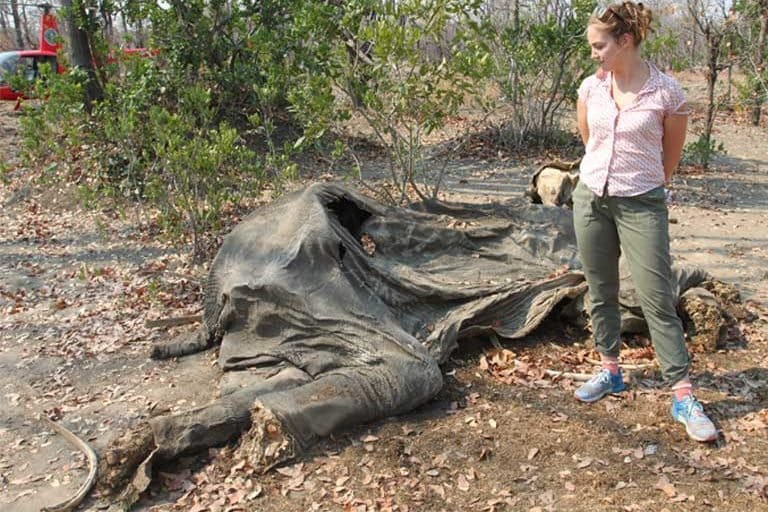
Mongabay: What would you say was your scariest experience?
Rachel Nuwer: The thing about the wildlife trade is a lot of it is not taking place in dark alleys or basement rooms because it doesn’t have to. It can operate completely in the open with impunity because nobody is doing anything about it. It was eye-opening.
When I went to that wild meat restaurant with the cobra, I expected it to be this creepy speakeasy where you had to do a [secret] knock. And it’s just this big beautiful restaurant, and the guy I was with was like, ‘My company had their Christmas party here.’
Mongabay: You’ve seen the darkest side of the wildlife trade. How do you make it through the day after seeing these atrocities, and how indifferent people can be? What encourages you to keep going and dig deeper?
Rachel Nuwer: It’s depressing. But ultimately, I really care about animals, and about solving [the trafficking] problem. Seeing incredible stories of hope, the dedication of the individuals on the ground [trying to] stop this, is really wonderful. It’s a way to keep an eye on the prize. The non-trophy prize.
Rachel Nuwer’s book, “Poached” was published in September and is available online and in bookstores.
This interview has been edited for brevity and clarity.
Correction: This story originally reported that Vietnam banned bear bile farming last year. This actually occurred in 2005.
FEEDBACK: Use this form to send a message to the author of this post. If you want to post a public comment, you can do that at the bottom of the page.
